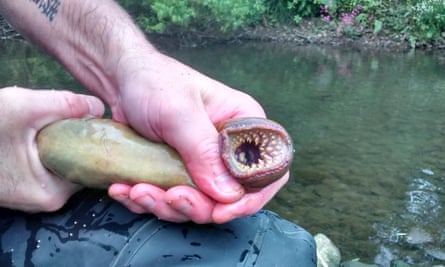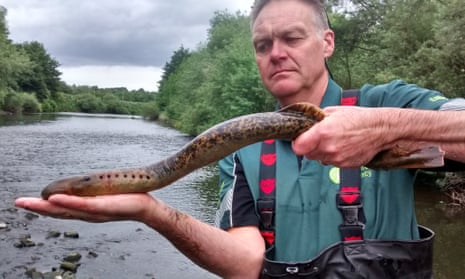An ancient fish blamed for the death of a king and served as a traditional royal dish is returning to parts of Britain where it has been absent for 200 years.
Lampreys, a Medieval delicacy and eaten in a scene of Games of Thrones, evolved almost 200m years before the dinosaurs but industrial pollution drove them out of many of Britain’s rivers.
They are now returning to the upper reaches of rivers that were once considered their heartlands but from which they vanished up to 200 years ago amid declining water quality and man-made blockages that prevented them migrating upstream and downstream.
Among the rivers the fish, described as “living fossils”, are reclaiming are the Ouse, Trent and Derwent.
Simon Toms, a fisheries expert at the Environment Agency, said: “For the last 200 years, some rivers have not been capable of supporting lamprey species as a result of water quality, poor habitat and manmade barriers.
“Now that water quality has improved and some of these barriers have been removed we are seeing lampreys return to the upper reaches of rivers such as the Ouse, Trent, and Derwent, where they were absent as recently as 30 years ago.”
An Environment Agency spokeswoman added that the eel-like creatures are returning “to their old slithering grounds”. The fish have been able to recolonise their traditional upriver habitat because of better water quality and the removal of structures that block their passage along rivers. Water companies have invested in treatment plants, while effluent from industry has been reduced through tighter regulations.

Several objects, such as weirs which block the fish’s passage, have been removed by the Environment Agency in England and innovations have been introduced to help them get past other structures, such as at Buttercrambe Weir on the River Derwent in Yorkshire where special ‘lamprey tiles’ have been laid.
Lampreys are parasitic fish that latch on to larger animals to suck blood and scales. They used to be common throughout the country but are now classified as endangered across Europe.
King Henry I of England, who was married to Edith, daughter of Malcolm III of Scotland, was known to be especially fond of the fish but died in 1135 after eating “a surfeit of lampreys” while in Normandy. The dish is thought to have given him food poisoning.
Lampreys remained, however, a favourite among royals and Henry’s grandson, King John, fined the city of Gloucester 40 marks – about £250,000 in today’s money – for failing to deliver him a Christmas pie filled with the fish.
It was traditional for Gloucester to send a Christmas lamprey pie to the English and later the British monarch until 1836 when the practice was discontinued, except for coronations and jubilees. In 2012 a pie was sent to the Queen to mark the Diamond Jubilee but numbers of UK lampreys were so low that they had to be imported from the Great Lakes of North America.

Comments (…)
Sign in or create your Guardian account to join the discussion